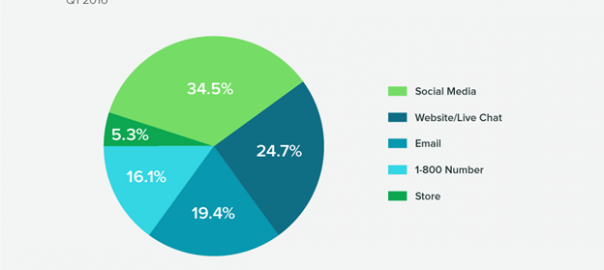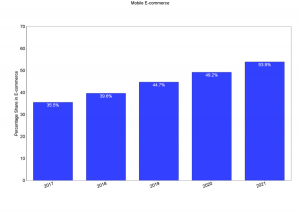Competitive analysis is a serious challenge for most marketers. It’s complicated, multi-faceted, and time-consuming. You need the right workflow and the right resources to perform a meaningful analysis. It’s also unavoidable: without competitor analysis, there’s no clear Unique Value Proposition, no understanding of what your brand’s advantages and disadvantages are, no justified marketing strategy.
Measuring your market share is an important part of competitive analysis. Market share, in turn, is determined by a number of metrics, one of which is share of voice. Share of voice shows how much people talk about your brand in comparison to your competitors’ brands.
The easiest way for a brand to measure SOV is by turning to social media.
Social media is where people talk about everything. Open a list of subreddits if you doubt that. No matter what your product is, you can find enough people who’ve talked about it online to make a reliable comparison.
How do you measure share of voice?
The most popular tools for measuring share of voice on social media are social listening tools. Social listening tools do much more than just measuring share of voice: they monitor mentions of any keyword (usually of your brand and your competitors’ brands) and perform analysis of the found data. The analysis can be of brand awareness, brand reputation (sentiment analysis), most popular niche trends, the distribution of brand awareness by location, language, and social media sources. And even that’s not all a social listening tool can do. So, share of voice is just one of the metrics. However, it’s worth pointing out that there are no tools that measure share of voice alone. It’s a rather complicated metric that requires complicated programming.
It might be also helpful to know that the share of voice metric doesn’t have to be about comparing your brand to your competitors’ brands. It can be also used to compare your products to each other. You might do it to find out which product gets more traction online and where it gets its traction from. Is it possible that MAC lipsticks are talked about on Twitter while MAC blushes are frequently featured on Instagram? Time to look into that and draw marketing conclusions.
So this is the list of five social media listening tools that measure share of voice. Pay attention and get ready for a thorough competitive analysis.
1. Awario
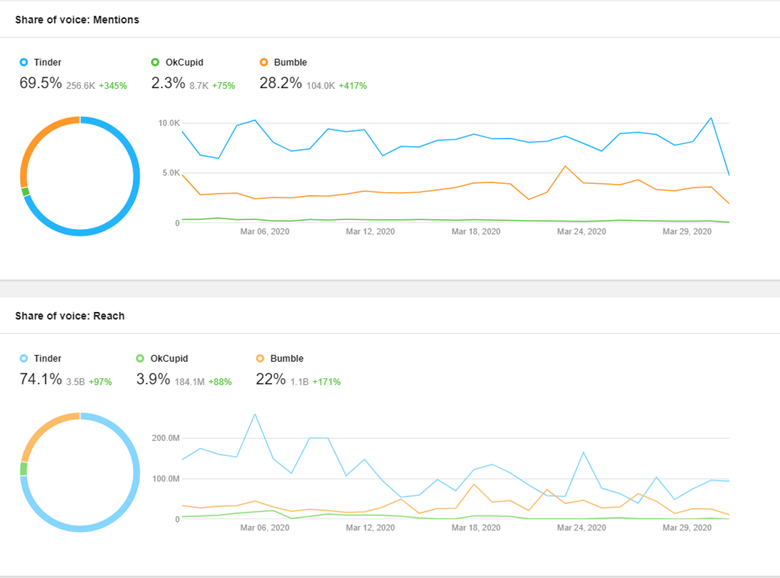
Best for: small to mid-sized businesses.
Awario is a social listening tool often used for competitor research. It gathers data about your brand and the brands of your competitors on social media networks, news sites, blogs, forums, and the web. You can choose which of these to include in the data and consequently choose where to measure share of voice. For example, you could measure your brand’s share of voice on news sites and blogs if your goal is to assess your PR efforts. Or you might be interested in a particular social media network you’re promoting your business on – for example, Instagram, which is often the case.
Awario collects data in real-time, which means you can not only assess your share of voice once but observe how it changes over time and how your actions and the actions of your competitors affect it.
2. Brandwatch

Best for: enterprises and agencies.
Brandwatch is one of the most sophisticated social media monitoring tools on the market. It’s far from budget-friendly, and it’s a sure overkill if share of voice is the only marketing metric you’re planning to look at. However, we know that that’s not usually the case – most marketers require tons of metrics, and that’s where Brandwatch can definitely help.
The tool doesn’t stop at monitoring popular social media networks, news, blogs, forums, and the web. It also covers niche and foreign social media networks, and if you lack a source, you can add it manually for Brandwatch to monitor.
Brandwatch is the ultimate enterprise-level tool for advanced competitor research. It shows the share of voice and breaks down this metric to show you how your brand compares in terms of reputation, demographics, and other metrics. It lets you discover in detail where you fall behind and where you win.
Pricing: available upon request.
3. Talkwalker
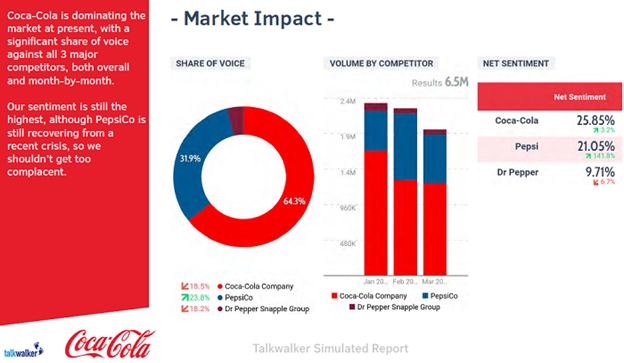
Best for: enterprises and agencies.
Talkwalker is another superb social media listening and analytics tool for businesses with a substantial budget. It monitors most social media networks, blogs, news, and the web. It analyzes mentions to show you your brand’s share of voice, as well as the volume of mentions by competitors, and net sentiment of each brand. You can slice and dice the data based on specific topics, channels, markets, and languages. You also get automated reports with all the metrics – Talkwalker works hard to save your time when it comes to ongoing competitor analysis.
Pricing: starts at €6000 per year. Other pricing options are available upon request.
4. SproutSocial
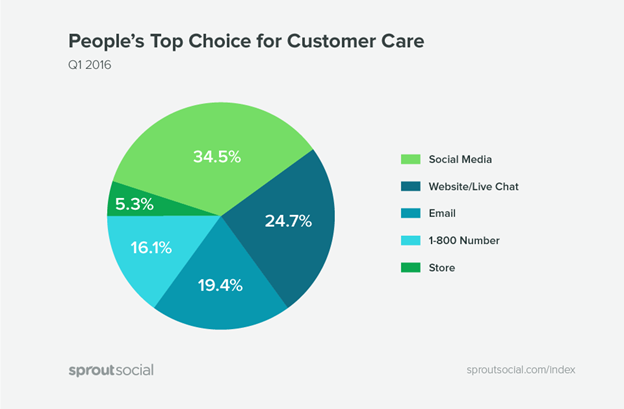
Best for: mid-sized and large businesses.
Sprout Social is an all-in-one social media management tool. Measuring SOV via social listening is just one of its many features. With Sprout Social, you can measure both your share of voice on social media (including blogs, forums, and news sites) and your PPC share of voice. This lets you assess where your brand stands in comparison to your competitors both in terms of organic brand awareness and social advertising. In addition, the tool’s competitor comparison allows you to identify industry gaps.
5. Social Searcher + Google Sheet
Best for: solopreneurs.
This is a free option for anyone on a very tight budget. Both Social Searcher and Google Sheet are free tools, and when combined, they can provide you with a solid idea of your share of voice. However, this will take some manual work.
Step 1.
First, open Social Searcher. The tool searches for mentions of any keywords in real time. Enter the name of your brand in the search bar, wait for the tool to gather mentions, and then look at the top of the page. You’ll see the total number of your mentions. In a new tab, open Social Searcher and search for mentions of your competitor. Repeat that for as many competitors as you like. Your search results can’t be saved, hence new tabs is a must.
If you want more information, look at the tool’s analytics. The additional metrics are “Users” and “Sentiment”. In the first section, users are sorted by the popularity of their posts and by the number of posts. “Sentiment” measures the tone of mentions, just like in other social listening tools.
Step 2.
Take the number of mentions for your brand and every competitor brand and sum them up to get the total. Then, divide the number of your brand mentions by the total number of mentions. Finally, turn the fraction into a percentage.
You can use this Excel spreadsheet for quick and easy calculation of share of voice. All you have to do is insert your numbers instead of the numbers in the table and see how the percentages and the graph change.
Pricing: free
Final thoughts
Calculating your share of voice, knowing how much attention you get from the social media audience, benchmarking your success against the success of your competitors – all these are important steps in understanding where your brand is and how you can move forward. Having the right tools by your side is vital in this process. Hopefully, you’ll find the tool you need on this list.
Digital & Social Articles on Business 2 Community
(44)
